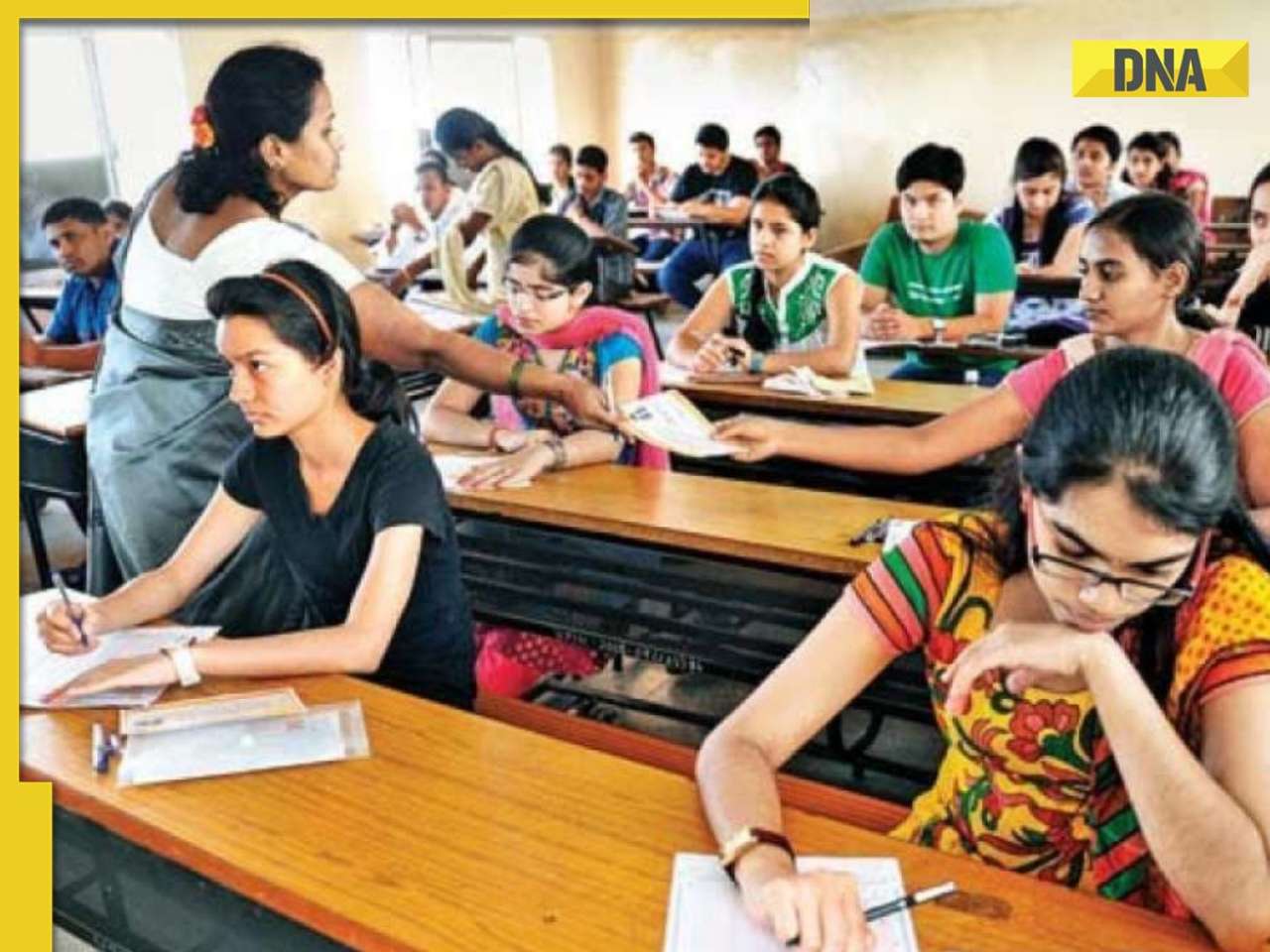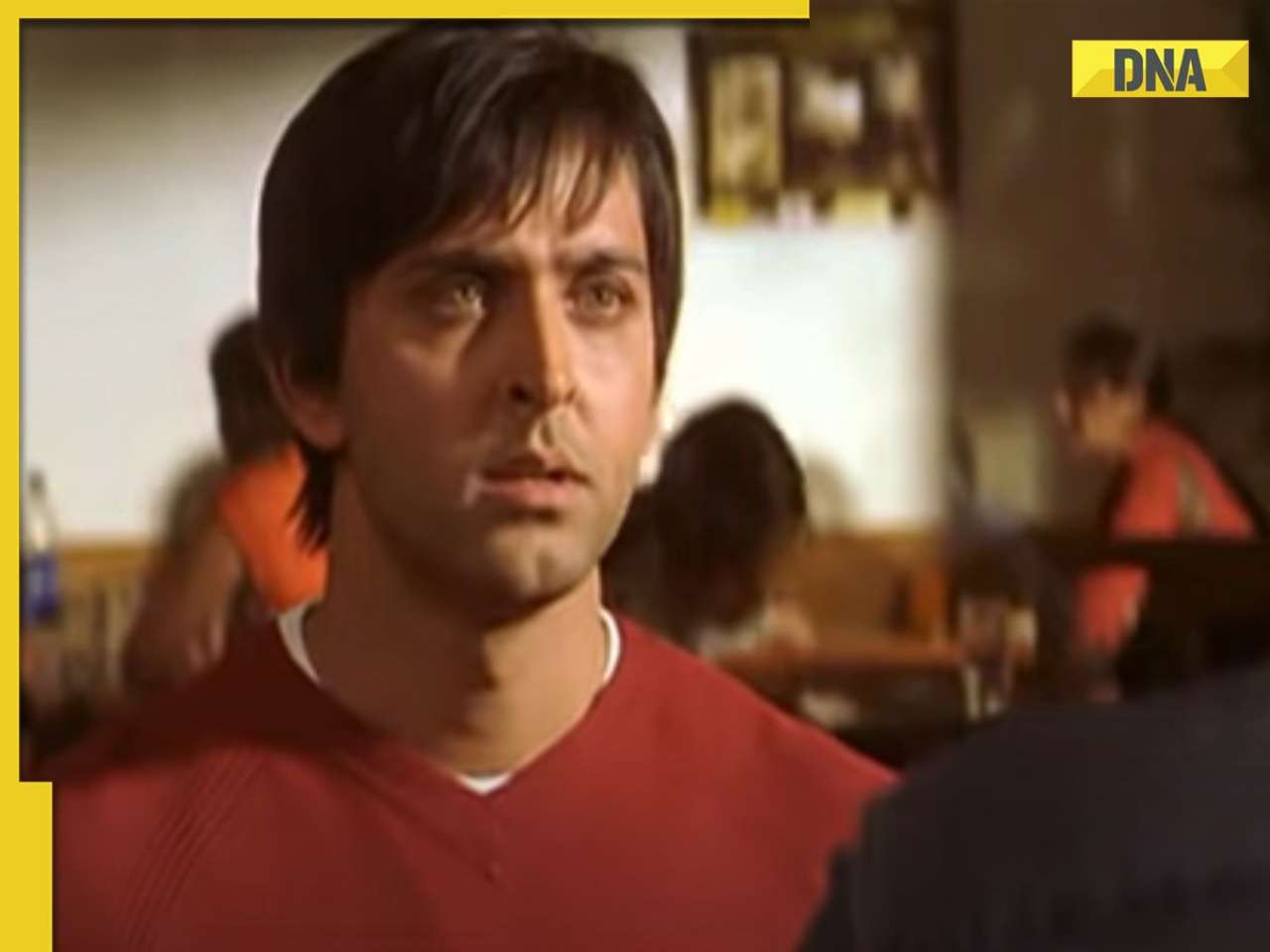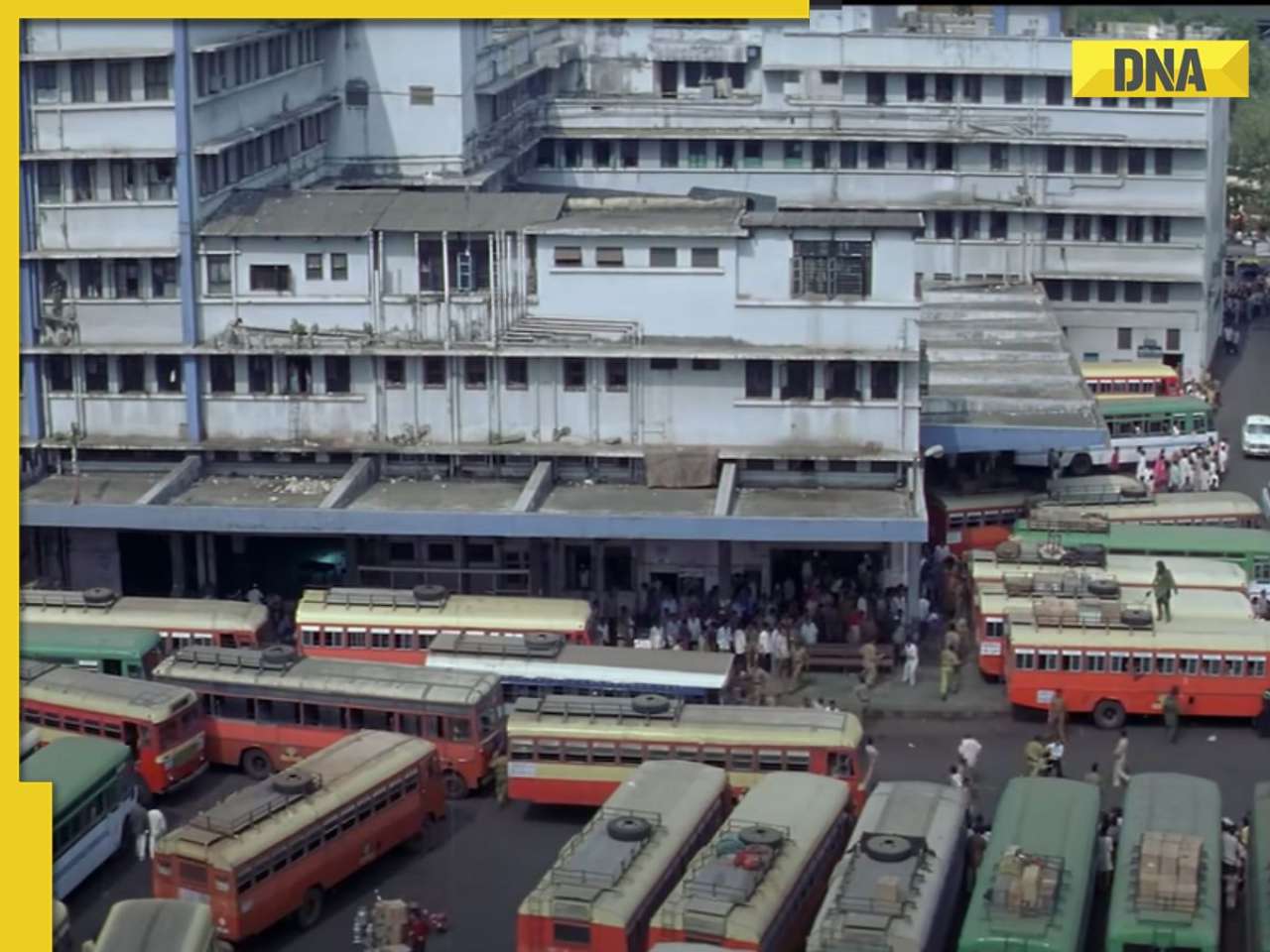If you are upset after seeing the ground reality of pollution in Singrauli, then sit tight now, because now we are going to tell you some more serious side effects of pollution in Singrauli.
"सीने में जलन, आंखों में तूफान सा क्यूं है,
इस शहर में हर शख्स, परेशान सा क्यूं है।"
This line is often used for the city of Delhi because Delhi is also called the capital of pollution. But now, after seeing this news, your misconception that Delhi is the most polluted city in the country will be removed.
Today, we will take you to a place where the level of pollution is three times more than that of Delhi. This place is the Singrauli district of Madhya Pradesh, which is recognised as an electricity and coal-producing district in the whole country. But now, the dark shadow of pollution has covered Singrauli.
Black Smith, an American organisation that prepares data on polluted areas around the world, has included Singrauli in the top 10 polluted areas of the world. India's Central Pollution Control Agency has also placed Singrauli on the list of the 22 most polluted areas of the country.
According to the report of the National Green Tribunal i.e. NGT, due to pollution in the Singrauli district, people are suffering from many diseases.
Singrauli is such a city in the country, where poison has mixed in the air to the water to such an extent that now even the lives of human beings are at risk. Due to pollution, the bones of the people living there have started melting, people are getting old at the age of 40 and the average age of the people is also decreasing by about five years. The very identity of the Singrauli district has become an enemy of the lives of the people living there. Singrauli is the district of Madhya Pradesh where the largest amount of electricity and coal is produced in the country.
In Singrauli, there are 11 Thermal Power plants, 16 Coal Mines, 10 Chemical plants, and 309 Crusher plants, along with steel, and cement industries. According to the NGT report, 45 lakh tonnes of waste is generated every year from these industries. Out of this, 35 lakh tonnes is only coal ash.
That is, Singrauli of Madhya Pradesh, which illuminates a large part of the country with electricity, itself is surrounded by the darkness of pollution.
In Singrauli district near NTPC, on the border of Uttar Pradesh, in Chilkhatand village of Sonbhadra district, the state of misery is such that leaving every house here, people are in the grip of serious diseases.
These are the side effects of pollution in Singrauli. The people living here are suffering. Most of the population here is still dependent on handpumps, wells, and river water because of this people are falling prey to diseases like fluorosis and cancer.
The land of Singrauli has also been contaminated. People are falling prey to diseases even after eating vegetables and grains grown on this land.
The thermal power plant in Singrauli produces 21,000 MW of electricity daily. For this, 103 million tonnes of coal is required.
Due to a lack of management, liquid fly ash is dumped into open rivers and drains after power generation.
Due to the continuous digging of coal in coal mines, mountains of mud and ash have arisen which can destroy the whole village anytime during
heavy rains.
In the name of investigation and disposal of pollution in Singrauli, a joint high-level committee of Uttar Pradesh and Madhya Pradesh has been formed but at present no result is visible.
The office of the Pollution Control Board in Singrauli has also become a mere formality.
Pollution in Singrauli is not just in the air and water. Rather, the pollution of negligence in the administration and system there has reached a dangerous level where efforts to deal with pollution are going on only through words.
If pollution could be controlled with big claims, then the name and trace of pollution in Singrauli would have been erased long ago. If still Singrauli is not saved from pollution, then hundreds of people living here will be killed unnecessarily and unnecessarily in the coming years.
If you are upset after seeing the ground reality of pollution in Singrauli, then sit tight now, because now we are going to tell you some more serious side effects of pollution in Singrauli.
Due to thousands of tonnes of chemical waste, ash, and polluted smoke being dumped daily, the underground water of Singrauli has also been contaminated. Here the level of Total Dissolved Solids ie TDS in water ranges from 500 to 700, which should normally be 100.
The amount of Flouride in water should not be more than 1.5 mg per litre but in Singrauli water it is 3 to 4 mg per litre. The amount of mercury in Singrauli water is 0.026 mg per litre, which should be 0.001.
And not only the water, but the soil of Singrauli has also become completely polluted. Here 10.009 mg of mercury is found per kg of soil whereas it should not be more than 6.6 mg per litre.
The effect of this is that people in Singrauli are falling prey to diseases after consuming vegetables and grains produced from the land. And even after drinking polluted water, they are becoming victims of diseases.
According to statistics, in the year 2022, 1836 TB patients were found in Singrauli. While in the year 2023, more than 1000 new TB patients have come to the fore.
And all this is happening because of pollution. But it is a matter of concern that Chief Minister Shivraj Singh Chouhan, sitting on the throne of power in Madhya Pradesh for almost one and a half decades, is not worried about the increasing pollution in Singrauli.
But we hope that after seeing this DNA test of ours, you must have understood what happens if the pollution crosses the limit.
![submenu-img]() Meet man, an Indian, whose family topped list of richest people in the UK with net worth of...
Meet man, an Indian, whose family topped list of richest people in the UK with net worth of...![submenu-img]() Pune: Tanker explodes in Pimpri Chinchwad, nearby hotels, houses and parked trucks damaged
Pune: Tanker explodes in Pimpri Chinchwad, nearby hotels, houses and parked trucks damaged![submenu-img]() Rohit Sharma lashes out at IPL TV broadcaster for 'breach of privacy'
Rohit Sharma lashes out at IPL TV broadcaster for 'breach of privacy'![submenu-img]() Heeramandi lyricist AM Turaz on Azadi: 'Women's contribution in Indian freedom movement has never been...' | Exclusive
Heeramandi lyricist AM Turaz on Azadi: 'Women's contribution in Indian freedom movement has never been...' | Exclusive![submenu-img]() Kangana Ranaut reveals if she will quit films after winning Lok Sabha elections, calls Bollywood 'jhoothi duniya'
Kangana Ranaut reveals if she will quit films after winning Lok Sabha elections, calls Bollywood 'jhoothi duniya'![submenu-img]() Meet IAS officer, daughter of milk vendor, who cracked UPSC in second attempt, secured AIR...
Meet IAS officer, daughter of milk vendor, who cracked UPSC in second attempt, secured AIR...![submenu-img]() UGC NET June 2024: Registration window closes today; check how to apply
UGC NET June 2024: Registration window closes today; check how to apply![submenu-img]() Meet IAS officer, son of teacher from Rajasthan, who cracked UPSC after multiple failed attempts, secured AIR...
Meet IAS officer, son of teacher from Rajasthan, who cracked UPSC after multiple failed attempts, secured AIR...![submenu-img]() Meet IIT graduates, three friends who were featured in Forbes 30 Under 30 Asia list, built AI startup, now…
Meet IIT graduates, three friends who were featured in Forbes 30 Under 30 Asia list, built AI startup, now…![submenu-img]() Meet woman who cracked UPSC in fourth attempt to become IAS officer, secured AIR...
Meet woman who cracked UPSC in fourth attempt to become IAS officer, secured AIR...![submenu-img]() DNA Verified: Is CAA an anti-Muslim law? Centre terms news report as 'misleading'
DNA Verified: Is CAA an anti-Muslim law? Centre terms news report as 'misleading'![submenu-img]() DNA Verified: Lok Sabha Elections 2024 to be held on April 19? Know truth behind viral message
DNA Verified: Lok Sabha Elections 2024 to be held on April 19? Know truth behind viral message![submenu-img]() DNA Verified: Modi govt giving students free laptops under 'One Student One Laptop' scheme? Know truth here
DNA Verified: Modi govt giving students free laptops under 'One Student One Laptop' scheme? Know truth here![submenu-img]() DNA Verified: Shah Rukh Khan denies reports of his role in release of India's naval officers from Qatar
DNA Verified: Shah Rukh Khan denies reports of his role in release of India's naval officers from Qatar![submenu-img]() DNA Verified: Is govt providing Rs 1.6 lakh benefit to girls under PM Ladli Laxmi Yojana? Know truth
DNA Verified: Is govt providing Rs 1.6 lakh benefit to girls under PM Ladli Laxmi Yojana? Know truth![submenu-img]() Kiara Advani attends Women In Cinema Gala in dramatic ensemble, netizens say 'who designs these hideous dresses'
Kiara Advani attends Women In Cinema Gala in dramatic ensemble, netizens say 'who designs these hideous dresses'![submenu-img]() Influencer Diipa Büller-Khosla looks 'drop dead gorgeous' in metallic structured dress at Cannes 2024
Influencer Diipa Büller-Khosla looks 'drop dead gorgeous' in metallic structured dress at Cannes 2024![submenu-img]() Kiara Advani stuns in Prabal Gurung thigh-high slit gown for her Cannes debut, poses by the French Riviera
Kiara Advani stuns in Prabal Gurung thigh-high slit gown for her Cannes debut, poses by the French Riviera![submenu-img]() Heeramandi star Taha Shah Badussha makes dashing debut at Cannes Film Festival, fans call him ‘international crush’
Heeramandi star Taha Shah Badussha makes dashing debut at Cannes Film Festival, fans call him ‘international crush’![submenu-img]() Streaming This Week: Madgaon Express, Zara Hatke Zara Bachke, Bridgerton season 3, latest OTT releases to binge-watch
Streaming This Week: Madgaon Express, Zara Hatke Zara Bachke, Bridgerton season 3, latest OTT releases to binge-watch![submenu-img]() Haryana Political Crisis: Will 3 independent MLAs support withdrawal impact the present Nayab Saini led-BJP government?
Haryana Political Crisis: Will 3 independent MLAs support withdrawal impact the present Nayab Saini led-BJP government?![submenu-img]() DNA Explainer: Why Harvey Weinstein's rape conviction was overturned, will beleaguered Hollywood mogul get out of jail?
DNA Explainer: Why Harvey Weinstein's rape conviction was overturned, will beleaguered Hollywood mogul get out of jail?![submenu-img]() What is inheritance tax?
What is inheritance tax?![submenu-img]() DNA Explainer: What is cloud seeding which is blamed for wreaking havoc in Dubai?
DNA Explainer: What is cloud seeding which is blamed for wreaking havoc in Dubai?![submenu-img]() DNA Explainer: What is Israel's Arrow-3 defence system used to intercept Iran's missile attack?
DNA Explainer: What is Israel's Arrow-3 defence system used to intercept Iran's missile attack?![submenu-img]() Heeramandi lyricist AM Turaz on Azadi: 'Women's contribution in Indian freedom movement has never been...' | Exclusive
Heeramandi lyricist AM Turaz on Azadi: 'Women's contribution in Indian freedom movement has never been...' | Exclusive![submenu-img]() Kangana Ranaut reveals if she will quit films after winning Lok Sabha elections, calls Bollywood 'jhoothi duniya'
Kangana Ranaut reveals if she will quit films after winning Lok Sabha elections, calls Bollywood 'jhoothi duniya'![submenu-img]() Sanjay Leela Bhansali calls this actor his only friend in industry: 'He doesn't care about my film, he cares about me'
Sanjay Leela Bhansali calls this actor his only friend in industry: 'He doesn't care about my film, he cares about me'![submenu-img]() Jolly LLB 3: Akshay Kumar wraps up first schedule; local artiste reveals actor's inspiring daily habits
Jolly LLB 3: Akshay Kumar wraps up first schedule; local artiste reveals actor's inspiring daily habits![submenu-img]() Before Ranveer Singh, Deepika Padukone; Bajirao Mastani was announced with these two superstars in 70s, it got shelved
Before Ranveer Singh, Deepika Padukone; Bajirao Mastani was announced with these two superstars in 70s, it got shelved![submenu-img]() Viral video: Donkey stuns internet with unexpected victory over hyena, watch
Viral video: Donkey stuns internet with unexpected victory over hyena, watch![submenu-img]() Viral video: 'Breathtaking' blue meteor illuminates skies over Spain and Portugal, watch
Viral video: 'Breathtaking' blue meteor illuminates skies over Spain and Portugal, watch![submenu-img]() Google CEO Sundar Pichai reveals his favourite foods in Delhi, Mumbai, Bengaluru and they are...
Google CEO Sundar Pichai reveals his favourite foods in Delhi, Mumbai, Bengaluru and they are...![submenu-img]() Cow fight injures two girls enjoying street snacks, video goes viral
Cow fight injures two girls enjoying street snacks, video goes viral![submenu-img]() Viral video: Man sets up makeshift hammock on bus, internet reacts
Viral video: Man sets up makeshift hammock on bus, internet reacts







































)


















)
)
)
)
)
)